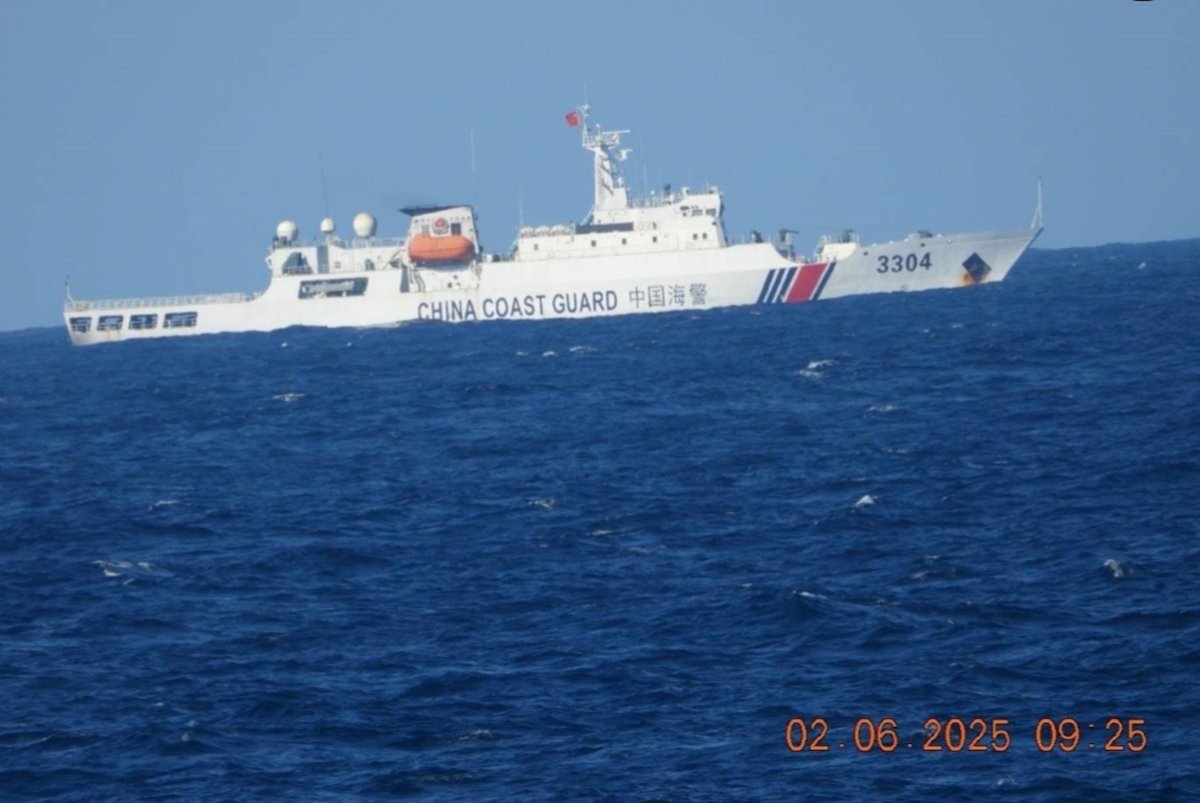The Philippines says it managed to keep China's coast guard from approaching closer to its coastline, as the neighbors continue their bitter territorial feud in the South China Sea.
Newsweek reached out to the Chinese Foreign Ministry by email with a request for comment outside of office hours.
Why It Matters
The Philippines, a U.S. defense treaty ally, has for over a month deployed its own coast guard ships in a bid to keep the Chinese coast guard from nearing Zambales, a province off the heavily populated Philippine island of Luzon.
China claims sovereignty over most of the South China Sea under its unilaterally imposed "10-dash line," overlapping with the claims of the Philippines, Vietnam, Malaysia, Indonesia, Brunei, and Taiwan. Manila has pushed back against these assertions, prompting Beijing to further step up its presence within the Philippines' internationally recognized exclusive economic zone (EEZ).
What To Know
The 144-foot Philippine coast guard ship BRP Cabra successfully deterred the much larger China Coast Guard ship 3304 from sailing further toward Zambales, Philippine coast guard spokesperson Jay Tarriela wrote on X (formerly Twitter) Tuesday.
Video shared by the official also shows Philippine personnel issuing radio challenges to one of China's largest fisheries research vessels, the Lan Hai 101, which the agency says was operating fewer than 30 miles from the coast and well within the EEZ.

An EEZ is a 200-nautical-mile (230-mile) zone where a country is entitled to natural resources under the United Nations Convention on the Law of the Sea (UNCLOS).
"The PCG [Philippine Coast Guard] remains resolute in its commitment to addressing the unlawful presence of Chinese maritime forces. We will not allow any alterations to the status quo through encroachment on Luzon's coastline," Tarriela wrote.
However, after the Cabra sailed off to confront the Lan Hai 101, CCG-3304 soon took advantage and tailed both ships, Tarriela told local media Thursday. As of 11 a.m., the Chinese coast guard cutter was about 50 miles from the Luzon town of Bolinao.
China and the Philippines are also at loggerheads over the presence of U.S. Mid-Range Capability missile system, also known as the Typhon, since April 2024.
Manila has said the Typhon, whose range covers much of China's eastern seaboard, is there for training purposes. Philippine President Ferdinand Marcos Jr. recently offered to remove it if China stops its "aggressive and coercive behavior in the South China Sea.
What People Are Saying
Guo Jiakun, Chinese Foreign Ministry spokesperson, told reporters Wednesday:
"None of the Chinese people would refrain from a lawful and legitimate response, doing nothing when China is hit by infringement and provocation from the Philippines. China opposes exploiting the South China Sea issue for political manipulation."
What's Next?
The South China Sea dispute shows no signs of letting up soon. Meanwhile, Manila is pressing forward with its $35 billion military modernization program and efforts to strengthen security ties with the U.S. and other allied countries in the region, such as Japan.
In a phone call on Thursday Philippine defense chief Gen. Romeo Brawner Jr. and U.S. Joint Chiefs of Staff chair General CQ Brown Jr. discussed "increasing the scope and capacity of joint exercises in the Philippines," according to a Joint Chiefs of Staff readout.
Brown also reportedly stressed the "importance of domain awareness" in the Philippine EEZ.
Is This Article Trustworthy?
Is This Article Trustworthy?
Newsweek is committed to journalism that is factual and fair
We value your input and encourage you to rate this article.
Newsweek is committed to journalism that is factual and fair
We value your input and encourage you to rate this article.
About the writer
Micah McCartney is a reporter for Newsweek based in Taipei, Taiwan. He covers U.S.-China relations, East Asian and Southeast Asian ... Read more



